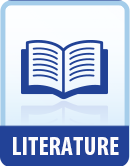|
This section contains 642 words (approx. 2 pages at 400 words per page) |

|
End-Stopped Lines
End-stopped lines occur when a phrase or sentence ends at the end of a line with a mark of punctuation. In a few cases, such as at the end of lines two and three, Baggott uses a dash to signal a pause for the reader, but except for the dash, she rarely employs an end-stop, preferring instead to continue the thought into the next line.
Enjambment
Enjambment occurs when the grammatical sense of a line continues beyond the line’s end into the next line. In this poem, Baggott uses enjambment to continue the thought through several lines, from the first line to line 19, where a period finally closes the opening thought.
Free Verse
Free verse is poetry with no predictable structure, rhyme scheme, or meter. Free verse allows the poet to fit the poetic line to the content of the poem. The poet is not...
|
This section contains 642 words (approx. 2 pages at 400 words per page) |

|




